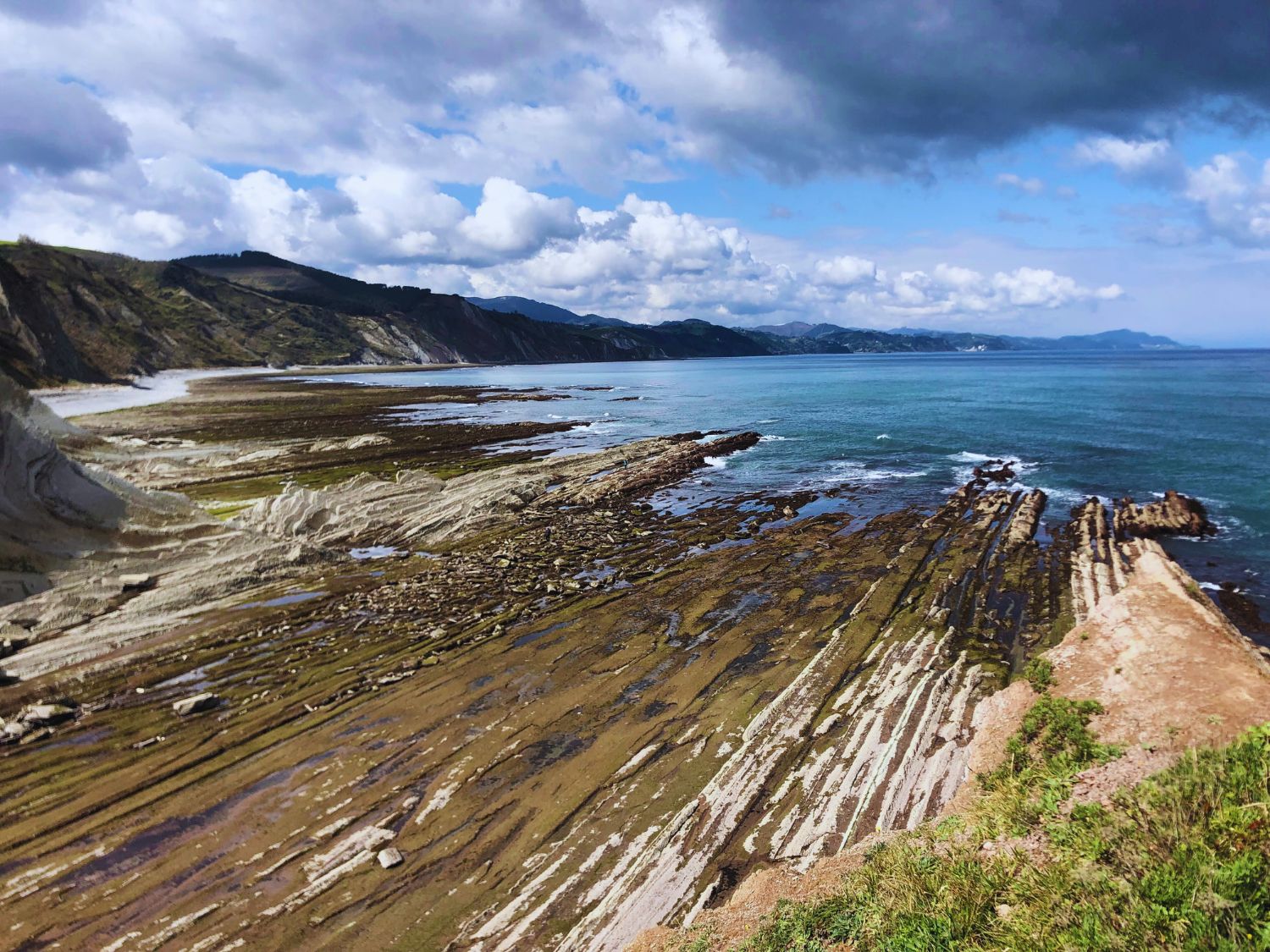With its unique natural setting and industrial and maritime history, there are plenty of things to do in Zumaia.
The Basque town is probably most famous for its natural and geological riches. Zumaia has some of the longest sets of continuous rock strava in the world (the Flysch) which has led the area being named a UNESCO Geopark.
However, there’s more to the town than just its picturesque landscapes.
In this article, we’ll dive into the best things to see and do in Zumaia and how best to spend a day here.
Things to see and do in Zumaia
Whether you’re passing by as part of a road trip, visiting on a day trip from San Sebastian, or staying a little longer in Zumaia, don’t leave the town without ticking off a few of the below.
1. Visit the Flysch
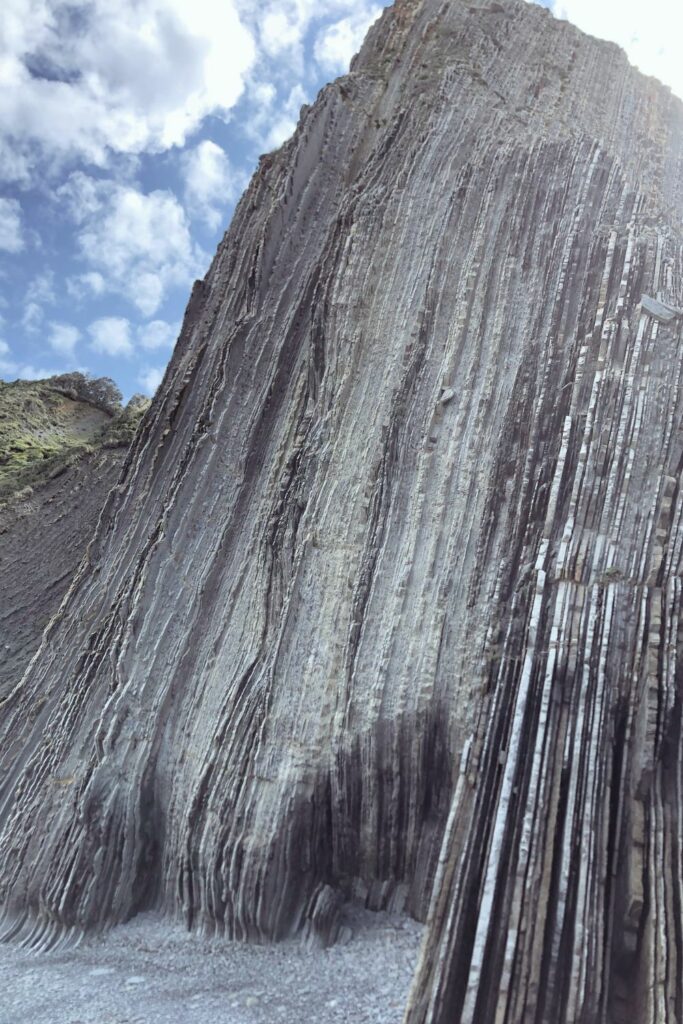
Our first recommendation is the obvious one, which is to take in the jaw dropping Zumaia flysch rock formations.
Zumaia has some of the longest sets of continuous rock strava in the world (the Flysch) which has led the area being named a UNESCO Geopark.
Not only do they look stunning, but they date back as far as over 60 million years and are effectively a living fossil of the Earth’s history.
The formations can be explored best from the central beach, Playa de Itzurun, or from the Algorri cliffs, both just a short walk from the town centre. It’s worth visiting during low tide so you can really take in all of the natural beauty of the coastline.
Pay a trip to the Algorri Interpretation Centre to equip yourself with the necessary information you need to get a better understanding of this natural marvel.
2. Hike in the natural landscapes
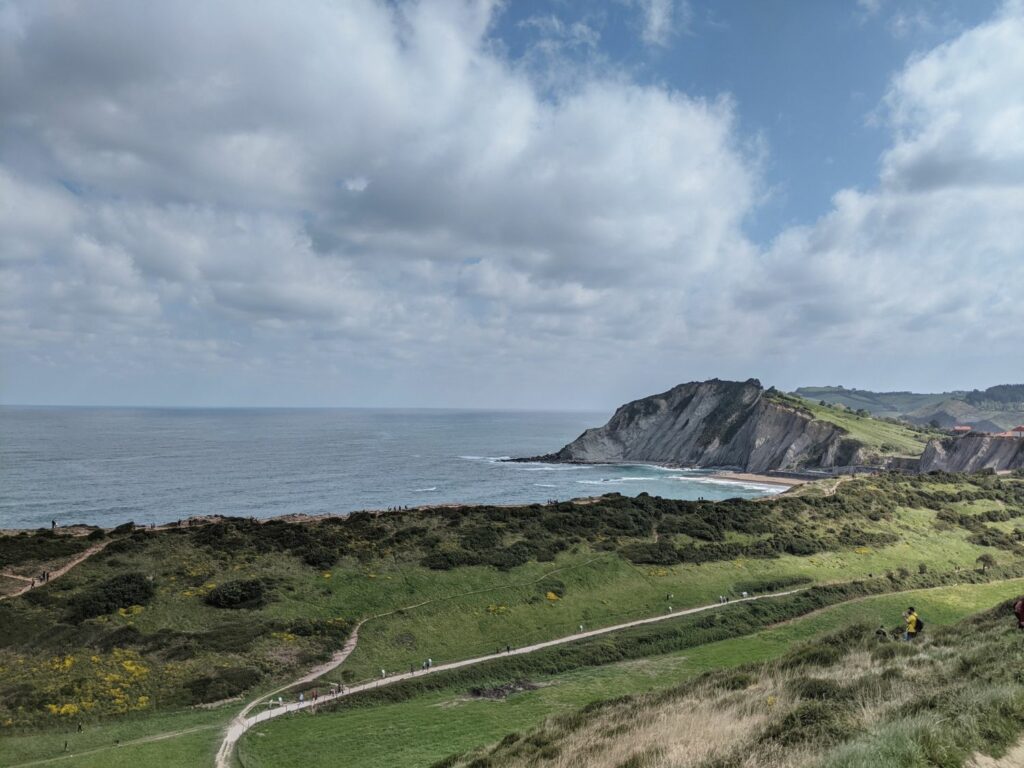
Zumaia sits on the famous “Way of St James” of the Camino de Santiago. And with such beautiful natural surroundings, it’s no surprise that the town is a popular spot for hiking.
The popular stage of the Camino de Santiago starts in nearby Zarautz, passes through Zumaia, ending in Deba.
But if the whole 21.3km is a little too much, I’d recommend hiking the 15km stretch from Zumaia to Deba which is simply spectacular!
If you fancy something a little lighter, there are a number of routes in the nearby countryside of the town marked on the map below. They start from an easy 6km route (in green) to a more comprehensive 11km (in yellow).
Personally, I love the walk from the Old Town to the Flysch viewpoint.
3. Explore the beaches
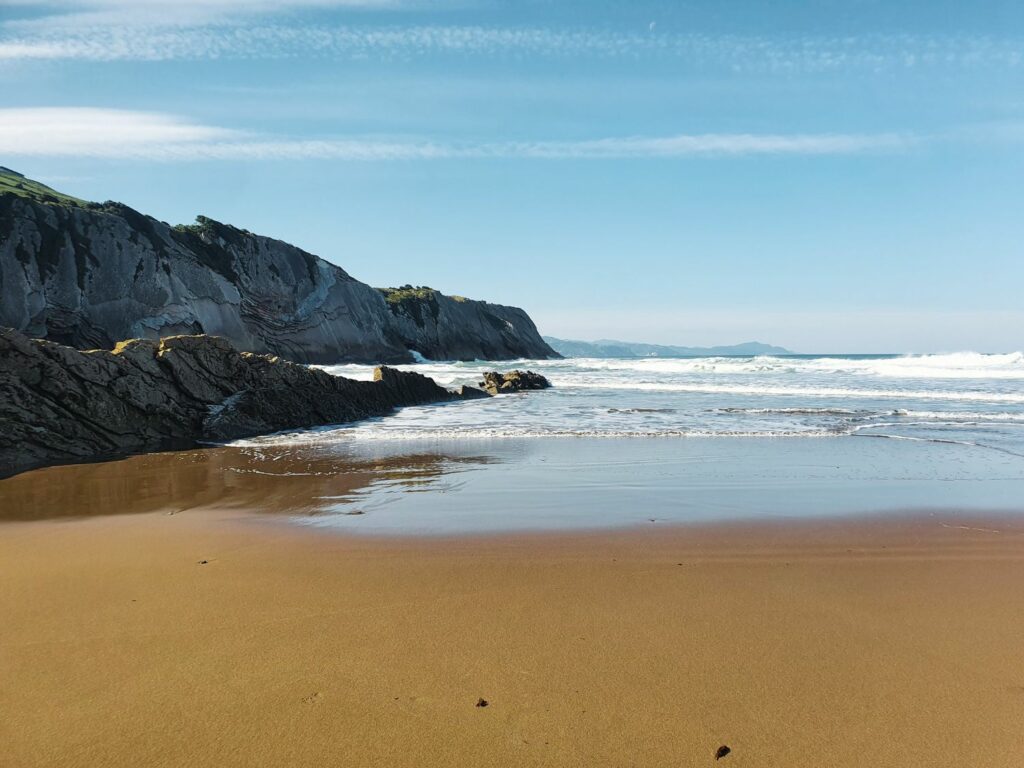
If you didn’t make it down to the Playa de Itzurun whilst visiting the Flysch, well now is the time to do so.
This 270 metre long beach is not only a good spot for a dip in the summer, it’s also a place where people surf, kayak and practise other watersports.
It’s also your chance to get real up close to the Flysch.
And it’s hard not to be mesmerised by the sheer beauty of this beach (just look at the photo)! It’s famous for being the beach of Dragonstone in the hit series Game of Thrones.
If you want a little more room (and less rocks), head to Playa de Santiago on the other side of Zumaia. This beach is a little bigger at 350 metres long and has all the facilities such as showers and public toilets.
4. Check the views from Ermita de San Telmo
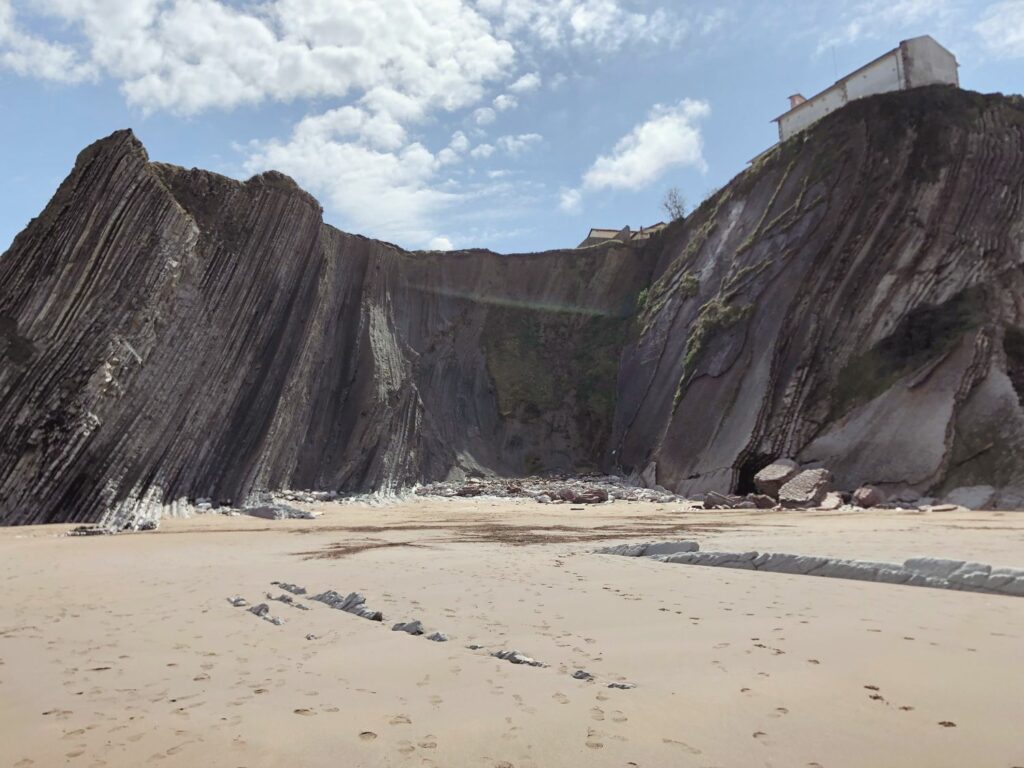
Situated on a cliff overlooking Playa de Itzurun, you’ll stumble upon a hermitage dedicated to San Telmo, the sailor’s saint, dating back to 1540.
The location of Ermita de San Telmo, rewards you with incredible views of the UNESCO Geopark landscape.
This spot has become even more famous after the wedding scene in the Spanish hit film “Ocho Apellidos Vascos” was filmed here!
It’s not just a pretty view. Inside, it’s particularly known for an amazing 18th-century wooden altarpiece, built in rococo style.
5. Visit the Church of San Pedro
The Iglesia de San Pedro, located in the old town of Zumaia, dates back to the 13th century. Its fortress-like Gothic design makes it look more like a fortress than a church.
But it’s a building that’s admired for its austere beauty and represents the architectural charm of the Middle Ages in Zumaia.
The unique design certainly stands out as one of the Basque Country’s most stunning single-nave Gothic spaces.
And it’s not just admired from the outside. Notably, the altarpiece created by Juan de Antxieta within the church is recognised as a national monument, adding historical significance to the site.
6. Wander the streets of the Old Town
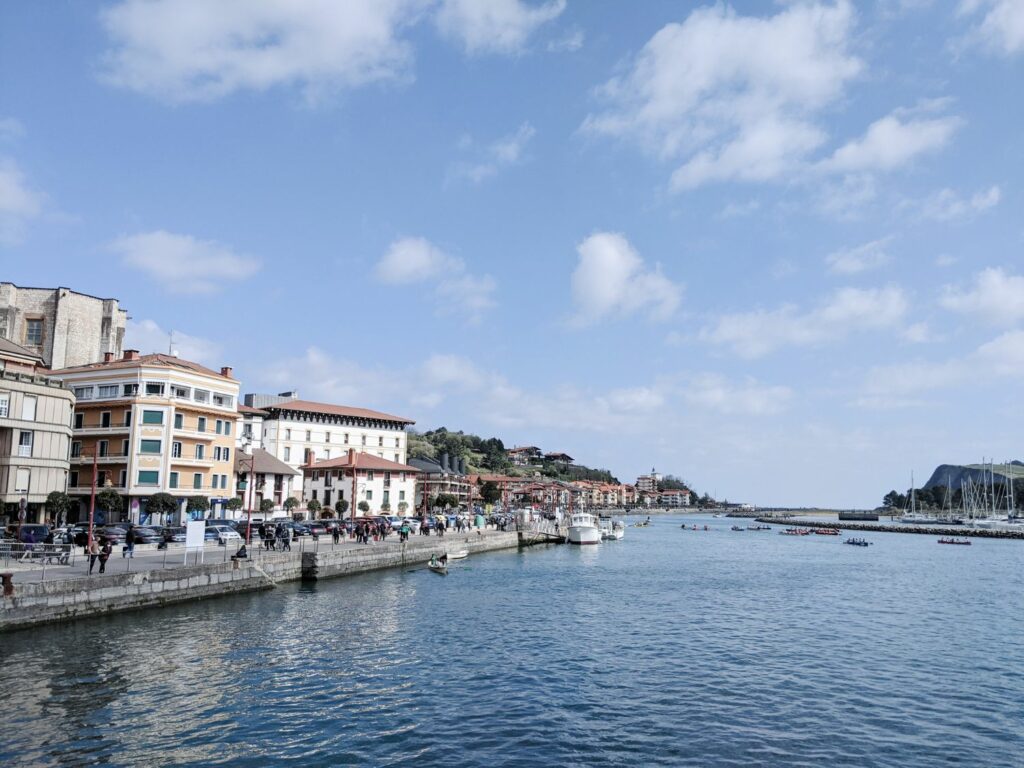
Alongside the church of San Pedro, there are a number of other significant buildings that make it worth a visit to the Old Town of Zumaia.
Amongst the narrow, steep streets that retains some of the Mediaeval heritage, look out for buildings such as Olazabal Palace, a palatial home built by Juan de Olazábal, secretary to King Felipe IV.
Foronda Palace, Ubillos Palace and Zumaia Palace are all located on the fringes of the Old Town. They are impressive structures, dating back as early as the 15th century.
Finally, the Saint Joseph’s convent is another beautiful building. The convent was founded in 1609, but some elements to the facade were added later in the 20th century.
How to get to Zumaia
Located in between Zarautz and Deba, just over 30 km from San Sebastian and 77 km from Bilbao, Zumaia is easy to reach by car, train or bus.
By car
Zumaia is located just off exit 48 on the AP-8 that links San Sebastian and Bilbao. You can also reach the town from the toll-free national road, N-634.
I’d recommend parking close to the river (especially during peak summer months) and walking down to the centre. You can find more info on the parking here.
By train
From San Sebastian, perhaps the most comfortable way of reaching Zumaia is via. train. The trip takes around 40 minutes in total, which is just 5 minutes more than driving and you don’t have to worry about toll fares or parking.
The topo (local regional train) from Amara station in San Sebastian leaves for Zumaia every half an hour on weekdays and every hour on weekends and bank holidays.
From Bilbao, the same train takes around 2 hours (it stops at a lot of stations on the way), leaving every hour.
By bus
The bus is the most economical way to get to Zumaia from San Sebastian.
You can take the UK09, UK10 or UK11 lines from the centre of San Sebastian (Plaza Gipuzkoa), directly to Zumaia. The journey takes about 1 hour.
